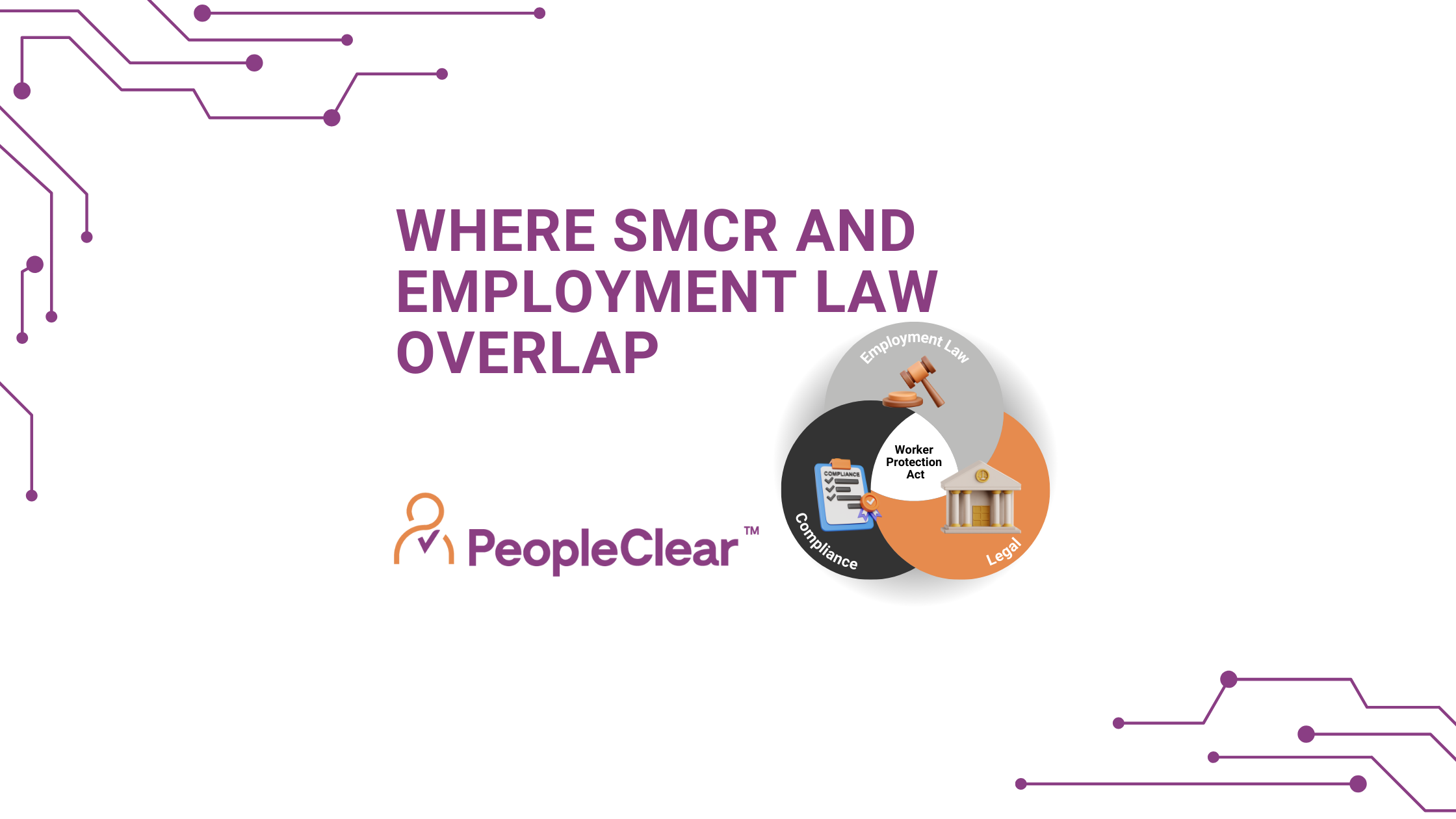Where SMCR and Employment Law Overlap: Are you ready for the Worker Protection Act?

All employers need to be ready to protect employees from sexual harassment under a new statutory obligation. From October 2024 there will be a new duty for employers to take “reasonable steps” to prevent sexual harassment. The Worker Protection Act, which is an amendment of Equality Act 2010, puts the emphasis on employers to focus on the prevention of sexual harassment, rather than dealing with incidents after they occur. These latest changes to UK Employment Law mean, for the first time, there is significant overlap between the requirements of SMCR and appropriate non-financial behaviour for firms.
What legislations was already in place to protect workers?
Before October the legislation in place to address harassment included the Equality Act 2010 and the Protection from Harassment Act 1997.
Harassment is defined as unwanted behavior that violates someone’s dignity or creates an intimidating environment based on a protected characteristic, such as race or religion. Under the Equality Act, a single incident can be considered harassment, while the Protection from Harassment Act requires at least two incidents to be considered harassment.
Changes for 2024; What is the Worker Protection Act and how does it affect businesses?
New legislation comes in from October 26th 2024 which will put the onus on employers to proactively prevent sexual harassment of their employees “in the course of employment”. This extends beyond the office to protect workers from incidents that could occur during work-related events. The emphasis on the employer, rather than individuals, to challenge inappropriate behaviour marks a significant shift in obligation and could require large cultural change for some firms.
This new duty predominantly protects workers only from direct sexual harassment and does not apply to workers being treated less favourably because they have rejected or submitted to sexual harassment or harassment of a worker related to any protected characteristic – including sex-based harassment – which is not of a sexual nature.
What is Direct Sexual Harassment
Direct sexual harassment is a form of sex discrimination that involves unwanted behavior related to someone’s sex or gender that violates their dignity or creates an intimidating environment. It can include a wide range of behaviours, such as:
- Verbal harassment
- Personal questions
- Staring
- Unwanted touching
- Displaying sexually graphic content
- Sexual advances
- Online harassment
Impact of Sexual Harassment
Sexual harassment in the workplace can have a significant impact on the victim but it can negatively affect the organisation as a whole too and cause distress for witnesses and workgroups.
- Victims may feel intimidated, distressed, and lack self-esteem and confidence. They may also experience low mood, depression, anxiety, stress, embarrassment, fear, and feeling unsafe. The impact can also include physical symptoms such as sleep problems and feeling unwell.
- Witnessing sexual harassment can also negatively impact other staff. As well as concern for the victim, they may feel concern or guilt around raising the issue themselves. It could cause them to feel stressed and unsafe at work.
- Working in an environment where sexual harassment is ignored or accepted can create a toxic workplace environment which can undermine performance and decrease organisational commitment
- For organisations sexual harassment can lead to staff sickness, absenteeism, resignations, and damage to the organisation’s brand or reputation. It can also lead to a loss of talent and a high turnover of staff, which can be costly for organisations.
How do I ensure my business is compliant with workplace protection laws?
All business should endeavour to create a safe and respectful work environment and demonstrate a commitment to the mental well-being of its employees. Employers have a legal and moral responsibility to ensure that all employees feel secure and valued.
Under the Worker Protection Act, employers are expected to take “reasonable steps” to prevent sexual harassment in the workplace. In a similar vein to the “reasonable steps” expected for SMCR compliance, what is considered reasonable steps may vary depending on the organisation, but focusing on prevention by creating a culture where employees feel safe to report harassment is a crucial step. This can be achieved by:
- Nurturing a safe and respectful work environment
- Leadership and organisational training to recognise the signs of sexual harassment in the workplace
- Implementing clear preventative sexual harassment policies and procedures for reporting sexual harassment
- Providing regular preventative sexual harassment training to all employees
- Ensuring that management is approachable and supportive
- Taking all reports of sexual harassment seriously and investigating thoroughly
However, the first step toward preventing and addressing this pervasive issue is to understand and recognise the signs of sexual harassment in the workplace. Initially, it may be hard to recognise the signs but effective training on the new Worker Protection Act can support organisations with this.
How do I prepare and ensure my business is compliant with workplace protection laws?
At PeopleClear we are uniquely placed to help. As part of the wider People Risk Solutions HR network we have developed engaging workshops that will meet the new statutory requirements, and will train your staff and managers in how to operate under the new laws.
Our 90 minute interactive workshop is case study driven and will take you through the new employment legislation. You’ll leave the workshop with action plans that can be implemented in your organisation immediately.
Contact us for more information and a pragmatic solution today.